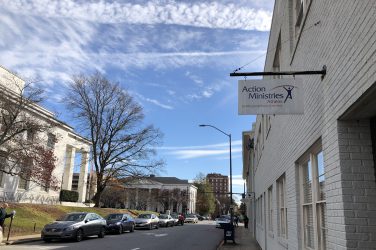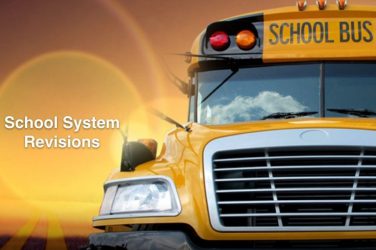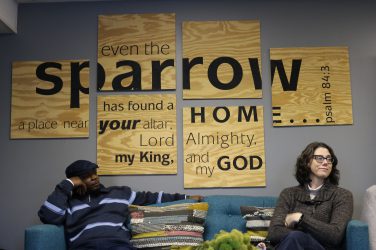A morning alarm rings through a bedroom in an apartment just off the campus of the University of Georgia. Logen Roberts, a senior at UGA, wakes up and wanders into her bathroom, turns on the tap, and begins brushing her teeth. She washes her face, gets dressed and heads out to the kitchen she shared with her three other roommates.
Her morning is a series of habits that are almost universal. Whether it’s something we want to think about or not, something as simple as brushing our teeth can have repercussions on the environment. So what’s the solution? What habits can people make in their daily lives to live more sustainably?
Why Should We Care?
Logen’s journey to becoming more sustainable began four years ago when she was a senior in high school when she bought her first bamboo toothbrush. According to EcoMANIA, a non-profit research group focused on creating a platform with reliable information on sustainability and the environment, “bamboo toothbrushes can significantly reduce the carbon footprint when compared to plastic.”
Globally, 3.5 million plastic toothbrushes are purchased annually and each one can take nearly 400 years to break down. During this process, they turn into microplastics which are the main cause for concern because they don’t biodegrade and are made from chemicals that, when they enter the water supply, soil and food chain, can cause health risks for humans as well as the environment.
On the other hand, bamboo is a renewable resource, meaning there isn’t a risk of running out of it because it is easy to produce and not at risk of running out. It’s also biodegradable, so unlike plastic, it doesn’t leave lasting impacts on the environment.

Bamboo products aren’t the only way to reduce waste. Logen and her roommates have made the switch from single-use products like paper and plastic dishes, utensils, cups and paper towels, to reusable items. In the long run, she says they’ve also saved money by not having to re-buy products they already have.
While Logen has made a lot of changes to support a healthy environment, there are some waste products that are unavoidable. “I do notice we go through food packaging more than anything else. Even if we forgo the plastic for fruits and veggies, the plastic from spinach containers, styrofoam from chicken, and aluminum chip bags fill our trash can pretty regularly,” she said.
Despite efforts to recycle, which her apartment does regularly, making sure to “encourage each other to check the recycling triangles on items,” things like chip bags and styrofoam have no other place to go but a landfill.
Logen is also lucky to have access to resources like recycling centers at her apartment complex, and to have learned how to properly do it. Growing up in Douglas, Georgia, learning about the environment and sustainability was not a part of her curriculums. In fact, while the Environmental Protection Agency has created learning materials and opportunities surrounding the environment, there is no requirement for schools to teach students about the topic.
Until coming the UGA Logen didn’t have a clear understanding of what sustainability is and how it can impact the environment. “My major classes taught me most of what I know about sustainability. I don’t come from a very environmentally conscious family, however being an interior design major, a huge focus in my field is on building sustainably. Recycling when I can, not using plastic water bottles, conserving water when showering or brushing teeth, and trying to buy from sustainable companies (when my finances allow) are my main routes to more sustainable choices.”
So What Else Can We Do?
It’s clear that education is the most important part of creating change. It’s easy to overlook how the health of the environment impacts every aspect of daily life, but things as simple as having access to clean water, food prices, the weather and flipping on a light switch, are all dependent on natural resources and sustainability.
Heidi Roop, a climate scientist and assistant professor at the University of Minnesota, says that the biggest battle facing the environment is getting people to see their connection to the environment; connecting its health and future to theirs.“This is the problem with it being an individual narrative, right, which is that we need collective change but individuals are part of achieving collective change.”
Roop has spent much of her career bridging the gap between science and society to make it easier to understand and easier to access. As well as working on a book of collective actions to help people become aware of their day-to-day impacts on sustainability, she is working with UMN to create a program that bridges the gap between science and local communities, to make it easier to understand and access information about climate change and the environment.
“Climate change is everywhere,” said Roop, “and we should be thinking about it as embedded in how we think about building careers or the future of all these things from computer science and AI to becoming a K-12 Teacher, you know, to working in government or law or business.”
According to Roop, understanding the environment and evolving climate change needs to become a required course for all majors. To make lasting change, the collective action employed by individuals has to become systemic and it starts with connecting the individual to the problem through knowledge.
As students, it’s important to ask questions, to push universities to make changes throughout their campuses and in their communities as well. Roop’s UMN program will reach people across the state and help them prepare for futures within a changing environment.
At the University of Georgia, the Office of Sustainability has taken measures to create a more sustainable environment on campus through a list of sustainable development goals. Since its formation in 2010, their work has decreased greenhouse gas emissions by 20% and has instituted campus recycling and compost programs that provide students like Logen, with the opportunity to learn about collective environmental actions they can implement in their daily lives.
Living sustainability is a process and constantly evolving. Education and collective actions are essential to creating a healthy environment and spreading environmental awareness. “I was very lucky to end up with a group of pals that love the planet and we hold each other accountable,” said Logen, “[but] I could improve the most in terms of sustainable living. Little areas- I can cut out packaging or plastic bags are where I need to focus.”
Linked to this article are educational materials on calculating your own carbon footprint. There are also resources on recycling methods and ways to get involved and advocate for sustainability on campus at UGA.
Antonia Bottinelli is a senior majoring in journalism in the Grady College of Journalism and Mass Communication at the University of Georgia with a certificate in global studies and a minor in sport management.









Show Comments (0)